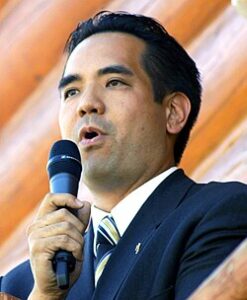Provided by Real Estate Roundtable
ABA real estate-related tax reform recommendations.
During this week’s TPAC call, there was discussion regarding the ABA report on options for tax reform in real estate. TPAC member Andrea Whiteway had principal responsibility for preparing the report, and several other TPAC members were also involved in the project – Jon Finkelstein, Bob Schachat, Jim Sowell, and Fred Witt. The report presents 30 recommendations for changes that touch on a wide variety of issues, including the at-risk rules, passive activity losses, lease construction allowances, debt-financed income, REIT rules, like-kind exchanges, and more. The ABA project can and should inform our own work on tax reform.
New Congress, new tax-writers.
The 114th Congress was sworn in on Tuesday with new leadership at the tax-writing committees. Rep. Paul Ryan (R-WI) became the new Chairman of the House Ways and Means Committee, Sen. Orrin Hatch (R-UT) is the new Chairman of the Senate Finance Committee. Chairman Ryan announced the Ways and Means Committee’s first full hearing will take place next Tuesday, January 13 at 10:00 am EST and will be focused on the state of the U.S. economy and policies to promote job creation and economic growth. The witnesses will be Martin Feldstein, Douglas Holtz-Eakin, and Simon Johnson. The hearing will be live-streamed by the Ways and Means Committee. The new members of the Senate Finance Committee are Senators Dan Coats (R-IN), Dean Heller (R-NV), and Tim Scott (R-SC). The new members of the House Ways and Means Committee are Representatives Patrick Meehan (R-PA), Kristi Noem (R-SD), George Holding (R-NC) and Jason Smith (R-MO).
Business tax reform legislation unveiled.
Staff for the 4th highest ranking Republican on the Ways and Means Committee, Republican Devin Nunes (R-CA), circulated the latest legislative proposal for comprehensive business tax reform – the American Business Competitiveness Act. The draft bill would replace current rules for taxing business income with a regime that taxes receipts on a cash flow basis (with 100% expensing of land, buildings, inventory, and other tangible and intangible property). The top tax rate on all business income (ordinary and capital gain) would gradually drop to 25 percent. The deduction for business interest expense (other than a qualified interest residence) would be eliminated. Financial receipts earned by financial institutions, in transactions with businesses, would be nontaxable for the bank and nondeductible for the payor. Interestingly, the draft bill includes a section of findings specifically focused on the deduction of business interest. It states:
Congress finds that the business interest deduction—(1) encourages businesses to finance their operations with debt; (2) results in negative effective tax rates for some investments; and (3) heightens bankruptcy risk during periods of economic distress.




